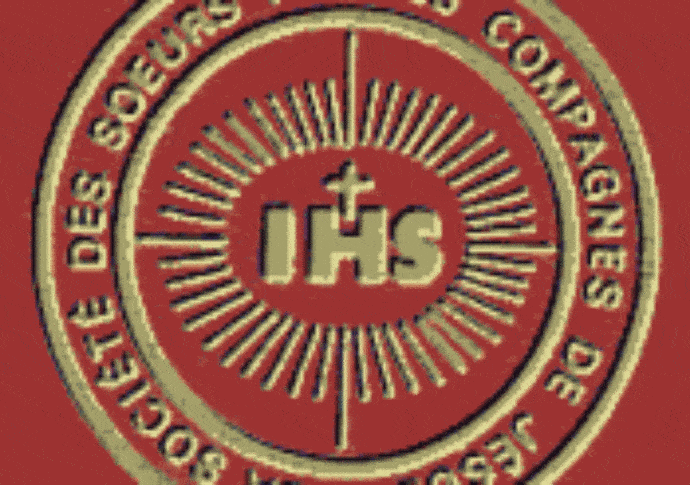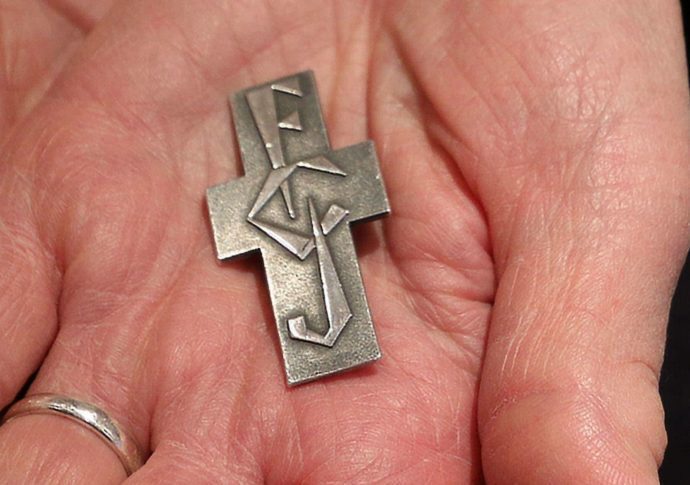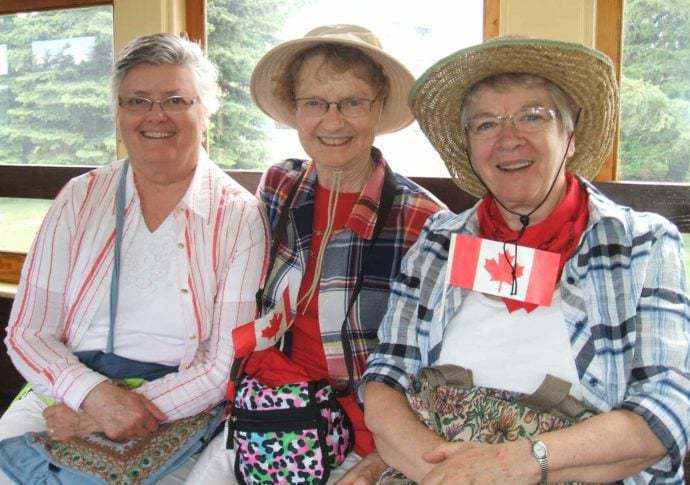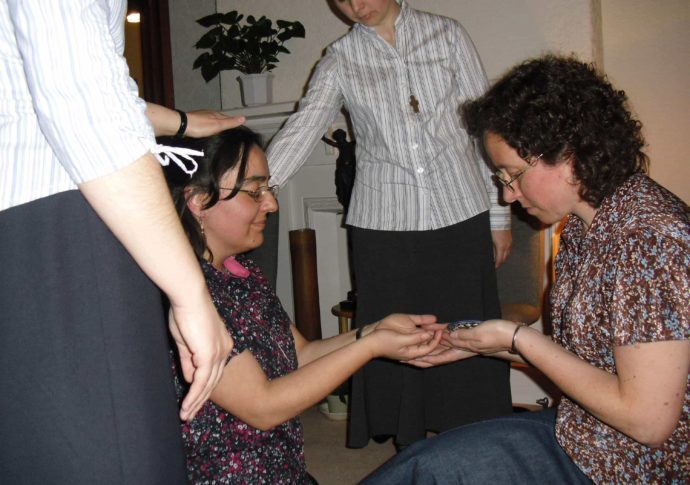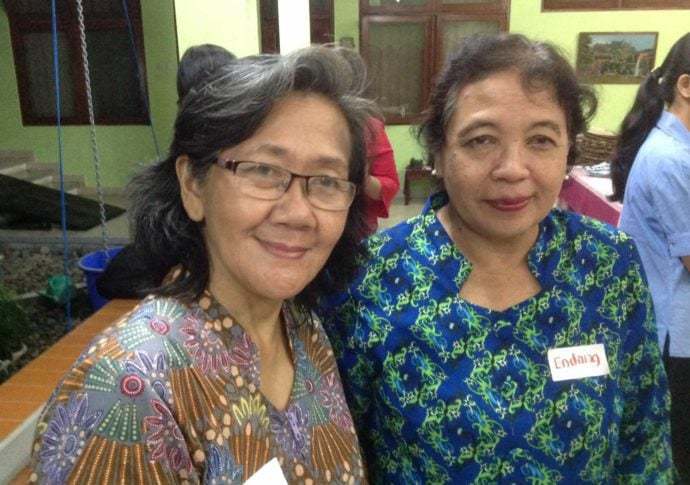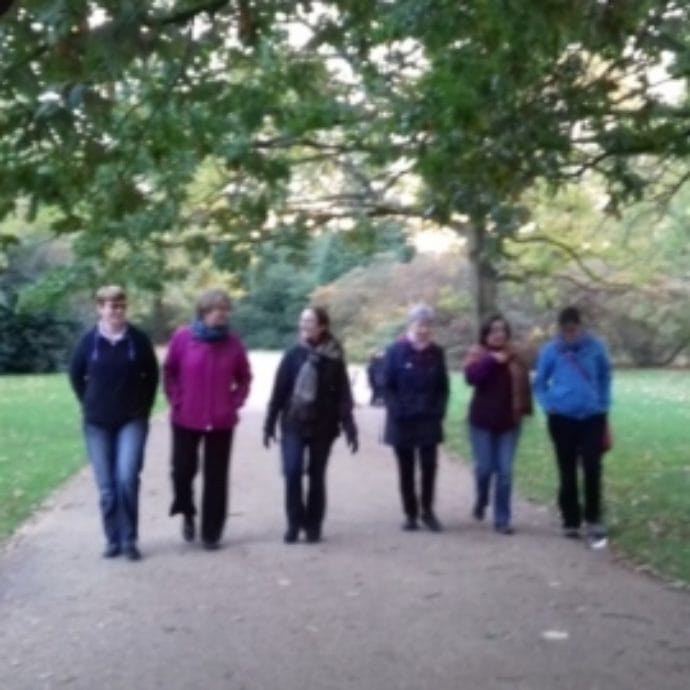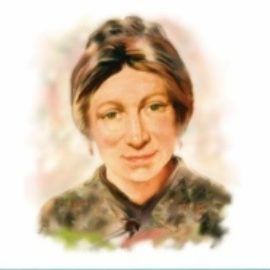The Bishop of Amiens, Jean-Pierre Gallien de Chabons encouraged Marie Madeleine to make further foundations. At first on his recommendation, but later because of the growing reputation of the new congregation, a number of bishops invited the FCJs into their dioceses, to provide schools and instruction in the faith for their people. Because of strong opposition from certain Gallican bishops, expansion in France was beset with difficulties. In spite of this, before her death in 1858, Marie Madeleine had succeeded in setting up a number of flourishing schools in different parts of that country, and also in England, Switzerland, Italy and Ireland.
Gallicanism
For many centuries, the Catholic Church in France had been characterised by its strong demand for a large measure of autonomy in its dealings with the Holy See. By the late 17th century, this movement was known as Gallicanism (from the Latin ‘Gallia’, France), and in Marie Madeleine’s time, Gallican supporters were numerous and determined. As a result, Rome had a special concern to weaken the power of the hierarchy in France. One way of doing this was by granting papal approbation, when requested, to religious communities known as Pontifical Congregations because they were accountable to Rome rather than to local bishops and priests. The FCJs belonged to this category, and it is clear that Marie Madeleine’s hopes for expansion in France were hampered by certain Gallican bishops and priests. In many places, her difficulties were exacerbated by the Jesuits, who although they did not support the Gallican position, used their influence to increase the fear of some bishops that the FCJs would be prepared to act independently of their wishes.
1823: Châteauroux, Berry, France
In 1823, Marie Madeleine made her second foundation, in Châteauroux, a mill town with a flourishing cotton trade, in the diocese of Bourges. It was in here that she initiated her practice of financing free education for poor children by concurrently running schools for the better off. She opened the house on Sundays and feast-days and large numbers came for instruction in the faith, and also to relax and enjoy themselves. The Dean of the Diocese later wrote of the early days of the FCJs in Châteaurroux: A veritable enthusiasm took over the town. Madame d’Houët’s name was on the lips of all. She appeared to exercise an attraction, an ascendance, over the people, but always for good. Children, and adults, rich and poor, experienced her influence. The good she did, especially that which she seemed called to bring about, cannot be described.
1824: Nantes, Brittany, France
The Bishop of Amiens saw Catholic Brittany as a promising source of vocations to the Society, and at his suggestion, Marie Madeleine went to Nantes, where she opened a house in 1824. The Bishop of Nantes welcomed the FCJs to his diocese, and by 1825, three schools, for children of rich, middle class and poor families, were established, and the education they provided was greatly appreciated by the people.
1825: Sainte Anne d’Auray, Brittany, France
In 1825, Marie Madeleine purchased a small house surrounded by heathland in Sainte Anne d’Auray, in the diocese of Vannes, Brittany. She built new premises (paid for by an anonymous donor) which incorporated small rooms for people wishing to make retreats. In addition, a free school for poor children as well as a large boarding-school were established. The people of the town were outstandingly generous in their financial support of the works of the Society, and the foundation was blessed with numerous candidates who presented themselves as postulants.
Read more about the history of the FCJ Society in France and at Sainte Anne d’Auray.
1829: Langres, Haute Marne, France
With the blessing of the Bishop of Langres, Marie Madeleine purchased a suitable property in Langres and undertook the organisation of retreats for young girls and adult women. It was in this city that a new direction emerged for Marie Madeleine’s apostolate: she set up a Society of Priests, its rule, like her own, based on that of the Company of Jesus. A new bishop, Pierre Parisis, a Gallican, arrived in Langres in 1833, and in the face of his hostility, Marie Madeleine eventually decided to close the house. The community and novices left Langres in 1838.
1830: Somers Town, London, England
When in 1830 a Republican Insurrection led to increasing hostility towards religion and religious communities all over France, the Bishop of Amiens advised Marie Madeleine to look beyond the boundaries of her country of origin. She went first to Belgium, but discovered it was not a propitious time to make a foundation there. She then made the journey to England , carrying a letter of introduction to a Belgian priest living in London. This priest, Father Jean Nérinckx, lived in the district of Somers Town, where he and his sister ran a charity school. He offered Marie Madeleine the house and school, and five days after her arrival, she took possession of the house and assumed responsibility for the educational establishment then known as St Aloysius’ Charity School for Girls.
Read more about the history of the FCJ Society in Britain or about Fr Nérinckx, the FCJs arrival in Somers Town, and the connections with the Loretto sisters.
1831: Annecy, Sardinia-Piedmont
In November 1831, Madeleine went to Annecy, then part of the Kingdom of Sardinia-Piedmont, and within a few months of her arrival, a free school for poor children, a day school and a boarding-school had been established. This promising foundation was destined to close dramatically within a year. A royal decree, dated 18 September 1832, forcibly closed the house in Annecy and expelled the FCJs from the States of Sardinia-Piedmont. The charge levelled against them centred on what was interpreted as undue secrecy regarding their Rule of Life. Having appealed unsuccessfully against the expulsion order, Marie Madeleine was obliged to act with some speed. With the strong support of a number of prominent local families, she instructed the community to move from Annecy across the border to Carouge, in Switzerland.
1832: Carouge, Switzerland
After the FCJ expulsion from Annecy, Marie Madeleine transferred both community and school to Carouge, near Geneva, Switzerland. The first Swiss foundation included a free school, and eventually an industrial school for girls learning a trade, as well as a boarding-school which was soon to become well-known throughout Europe. Until the foundation of Paris in 1848, Carouge effectively functioned as the first FCJ Generalate.
Read more about the history of the FCJ Society in Switzerland.
1832: Estavayer, Switzerland
At the request of the Bishop of Lausanne, Geneva and Fribourg, the FCJs went to Estavayer, Switzerland. In addition to considerable financial support, the town gave a house and garden to the sisters, who set up a school which quickly attracted a large number of pupils. The house in Estavayer remained in the hands of the FCJs for only four years. In 1836, difficulties arose which forced Marie Madeleine to close it.
1835: Tottenham, near London
In 1835, Marie Madeleine opened a school for poor children in Tottenham, then a village a few miles from London, as an extension of the work being carried out in Somers Town. This house was destined to be short-lived. It closed that same year, due to a fire which obliterated the entire building in the space of an hour, providentially without serious injury or loss of life.
1835: Bourges, Berry, France
A foundation was made in the city of Bourges in 1835, when the FCJs established a school which quickly began to prosper. However, in 1838, due to opposition from Gallican clergy, the sisters were forced to close the house and leave the city. Marie Madeleine, reluctant to abandon the work of education which she had begun in Bourges, left the FCJ house in the care of Adèle Bouques, a first cousin of Marie de Bussy FCJ and a former pupil of the school in Châteauroux. For more than twenty years, Adèle, a qualified teacher, continued to run the school for poor children with FCJ financial support and the help of some trusted colleagues.
1836: Turin, Sardinia-Piedmont
Marie Madeleine, wishing to restore the good name of her Society after the FCJ expulsion from Annecy, turned her attention to Turin, at the time still part of the Savoy Kingdom of Sardinia-Piedmont. She wrote a personal petition to King Charles Albert, expressing simply and sincerely the truth about herself, her Society and its mission and asking him to rescind the verdict which had forced the FCJs to leave Annecy in 1831. In reply, the King formally recalled her to his States and expressed his ‘deep sorrow’ for all that had happened. The way was now clear for a new foundation in Sardinia-Piedmont, and in mid-January 1836, Marie Madeleine set out with another sister, and together they made the long and perilous journey across the Alps to Turin, home of the Royal House of Savoy.
Read more about the history of the FCJ Society in Italy.
1838: Nice and Asti, Sardinia-Piedmont
In 1838, Marie-Madeleine opened a school for poor children in Nice (which became part of France in 1860, but was then in the Kingdom of Sardinia-Piedmont), and before long a boarding-school for the well-to-do was also established. The FCJ convent and its flourishing schools in Nice were obliged to close in 1904, when, once again, religious congregations were forbidden to run schools in France.
Opened in the same year as Nice, Asti, where the early efforts of the Society were problematic almost from the start, closed twelve years later.
1838: Menotey, Jura, France
Also in 1838, Marie Madeleine opened a house in Menotey, a small town in the mountainous region of the French Jura. To her disappointment, this foundation was beset with difficulties from the start (some of these were perpetrated by the Jesuits) and never flourished. Like Asti, the FCJ house in Menotey closed in 1850.
1841: Isleworth, near London
From her experience of the school in Somers Town, which was dependent on donations, Marie Madeleine wanted to set up a school which would be not only be self-financing, but might also be a means of recruiting more English vocations to her Society. In 1841, she purchased Gumley House, a large property in Isleworth, some ten miles west of London. Julie Guillemet was left to guide this important FCJ foundation in the early stages of its development. A successful boarding-school was established, and soon afterwards, a day school also.
1843: Oughterard, Ireland
In 1842, the Society was invited to make a foundation in Oughterard, Connemara, Ireland. In early 1843, Julie Guillemet and a companion immediately rented a house, to be used as a school. When, a year later, nine postulants had presented themselves, the house was also used as a novitiate. The apostolate in Oughterard prospered, but Marie Madeleine became less and less convinced about the suitability of this remote country town if her dream of expansion in Ireland was to be realised. Regretfully, she closed the house in Oughterard in 1845, and opened a new house in the city of Limerick, on the river Shannon.
Read more about the history of the FCJ Society in Ireland.
1844: Liverpool
Since the early years of the Industrial Revolution, Irish people had been going to Liverpool in great numbers to seek work. Excavation of the docks on both sides of the Mersey and the building of the railroads provided employment for thousands of Irish labourers. In 1820, the parish of St Patrick, Macklin Street, had been opened expressly for Irish families, and in 1844, the parish priest asked the FCJs to open a school. They did this, and in those early days about 1000 children daily attended St Patrick’s School. In the same building, they also held a night school for 200 working girls.
1845: Camon, Amiens, Picardy, France
In their ministry among the women who worked in the mills and factories, the sisters were keenly aware of a large number of homeless children in Amiens. In 1845, they set up an orphanage in Camon, a suburb of Amiens, and they ran it devotedly and effectively for many decades.
1845: Limerick, Ireland
When she arrived in Limerick, Marie Madeleine leased the property of Laurel Hill, and in 1846, the formal opening of the convent took place. Before long, the FCJ boarding-school had acquired an excellent reputation, and both pupils and postulants came in good numbers. The sisters also offered adult evening classes to poor girls and young women who spent their working days in local factories. When the potato blight struck Ireland in 1846 and 1847, the number of pupils at Laurel Hill School dwindled to fifteen and Marie Madeleine thought the house would have to be closed. The aftermath of the famine in Ireland lasted for many years, but for Laurel Hill, the crisis passed and the school slowly began to thrive again.
1847: Paris, France
Marie Madeleine knew that the Archbishop of Paris, Denys-Auguste Affre, a convinced Gallican, was unlikely to be favourable to her congregation, but in 1847, she felt it was time for her to make a foundation in Paris. She approached the Archbishop for permission, and her request was granted without hesitation. He made no secret of the fact that his reason for doing this sprang from his experience of the dedication and hard work of the FCJs more than ten years previously, when he had been Vicar General of the diocese of Amiens. In January 1847, two adjoining properties were purchased by Marie Madeleine on Rue de la Santé, Paris. Here a school for poor and neglected children was established, followed soon after wards by a boarding-school.
1849: Gentilly, Paris, France
When it became clear that a boarding-school and a poor school could not co-exist successfully on the same premises, Marie Madeleine looked for a suitable site so that the two schools could operate independently. In 1849, she purchased from Father Francis Libermann, Superior General of the Holy Ghost Fathers, some land at Gentilly, then on the outskirts of Paris. Here she built an orphanage for 150 children and later also established a boarding-school for girls.
1851: Birkenhead, England
In 1849, the FCJs had set up an upper class boarding school at Lingdale House, not far from Birkenhead, then in the diocese of Liverpool. Three years later, in 1851, in response to a request from the Bishop of Liverpool, who believed that a school was needed for the growing mercantile class in Birkenhead, the FCJs opened a day school, known as Holt Hill, in the town. In time, this school became highly respected for its educational excellence.
1853: Salford and Manchester, England
From Liverpool and Birkenhead, reports of the work of the FCJs in the field of education spread to other parts of North West England. The Bishop of Salford asked the foundress to turn her attention to the needy twin towns of Salford and Manchester, where mills and factories had sprung up in the wake of the Industrial Revolution. By 1853, two schools, Adelphi House in Salford and Upper Brook Street in Manchester were established, and the sisters also worked in a number of parish schools for the children of impoverished families in both Salford and Manchester.
1854: Chester, England
The FCJs arrived in Chester in 1854 at the invitation of the Bishop of Shrewsbury, who knew the Society through the FCJ schools in Birkenhead. Following their custom, the sisters set up schools for the daughters of better-off families while also turning their attention to the education of the poor in St Werburgh’s parish school.
1856: Bruff, Ireland
In 1856, two years before her death, Marie Madeleine opened the second FCJ school in Ireland: in the small rural town of Bruff, County Limerick. The reputation of St Mary’s, Bruff, with its boarding, day and national schools, was such that for more than one hundred and fifty years pupils came from all the surrounding area for their years of primary and secondary education. In addition, of all the houses in the Society, Bruff is the one that produced the largest number of FCJ vocations.
Read more at the pages on the history of the Faithful Companions of Jesus in Europe.



